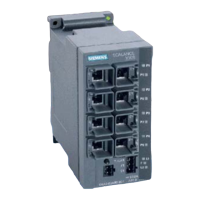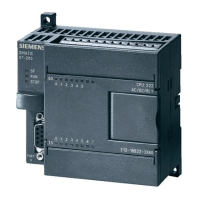Product Overview
1.5 Using the TD Device to Access Screens and Alarms
Text Display (TD) User Manual
System Manual, 08/2008, A5E00765548-03
21
Storing the Screens and Alarms in the Parameter Block
The S7-200 CPU stores the text, embedded variables, and format information for the alarms
and screens in a parameter block located in V memory. You use the Text Display wizard to
configure the starting address for the parameter block in V memory, and the Text Display
wizard allocates the memory required to store the information for the TD device.
If you configure more than one parameter block for the S7-200 CPU (with each parameter
block having a different range of addresses in V memory), you can connect several TD
devices to that one S7-200 CPU. You configure the V memory address for the specific
parameter block for each of the TD devices. The Diagnostic Menu of the TD device provides
a TD Setup command for specifying the starting address of the parameter block.
Tip
The parameter block for the TD 100C and the TD400C is not compatible with other TD
devices. The TD 100C parameter block is only compatible with a TD 100C parameter block,
and the TD400C parameter block is only compatible with a TD400C parameter block.
Displaying the Screens and Alarms on the TD Device
When the operator uses the buttons on the TD device to select a screen, the TD device
reads the screen information from the parameter block (stored in V memory of the S7-200
CPU) and displays the appropriate screen.
When you configure an alarm, you also configure an alarm bit for enabling a specific alarm.
The logic of your user program sets this alarm bit to display the alarm on the TD device.
When you create the text for the alarm, you also designate the alarm bit. If you configured an
alarm to require acknowledgement by an operator, that alarm also has an acknowledge bit.
The TD device continuously polls the alarm bits to determine which alarms have been
enabled.
To display an alarm on the TD device, your user program in the S7-200 CPU must first set
the alarm bit for the specific alarm. When your user program sets one of the alarm bits, the
TD device then reads the alarm bits in the parameter block in the S7-200 CPU and displays
the corresponding alarm message.

